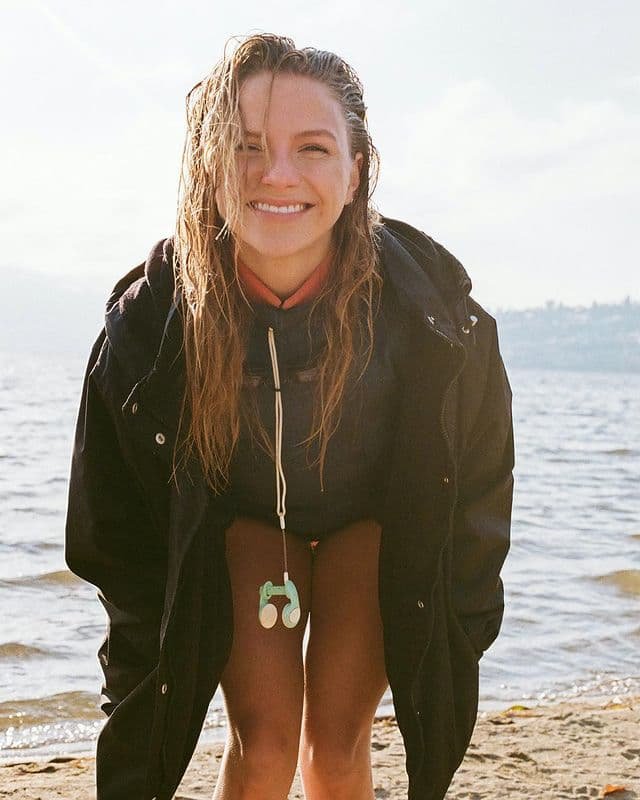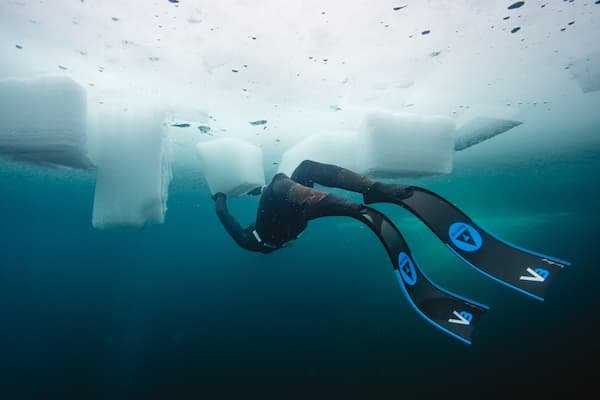Cold water training is a practice that humans have been pursuing long before its surge in popularity in recent years. Cold water therapy was first mentioned in ancient Egyptian text in 3500BC and in various ancient texts all around the world. Since then, people have continued with this "biohacking" cold water practice to gain all the superhuman benefits that it provides. As a Canadian freediver, cold water/ ice diving has never been far from thought. I am currently preparing for this year's ice diving season and readying myself for my upcoming ice dives on Canada's east coast. It is during this time that I learn the power that comes from exposing our bodies to extreme cold from both professional ice divers and personal experience.
If you’re reading this article, chances are you too may be finding it hard to resist the cold and may have heard its vast number of positive effects. The benefits of cold immersion include:
Lowering body fat
Increasing hormone levels
Increased dopamine levels
Improving sexual performance and fertility
Lowering blood sugar
Cutting food cravings
Improving adrenal function
Fixing thyroid issues
Enhancing immune function
Improving sleep quality
Increasing pain tolerance
Reducing inflammation
Severely strengthening character!

For most who are not in the community already, it can be difficult to know where to start. Especially when it comes to the training that it entails to build tolerance safely. Some of these questions might include:
Where, when, and how do I start?
How do I cope with my fears of hypothermia, frostbite, and shock?
How long do I need to really stay in to get all the benefits?
How do I train my breath hold for cold water diving?
Before you begin to overthink the practice and invest in cold water equipment, start with what is available to you- the shower! Depending on your timeline, a 2-4 week daily cold shower will help you understand the physiological responses our bodies have to the cold and how to manage those sensations.
In the first 1-2 weeks, start with 60-second cold showers, or 30-second cold bursts with a 10-20 second break in-between. You may also take your nose clip into the shower and practice holding a mouthfill while transitioning from hot to cold with the water hitting your face directly. In the first few weeks, use this time to gain awareness of the sensations you feeling and where tension is held in the body. As freedivers, it's all about gaining control of the gasp response and regulating our relaxation throughout our dives. Begin practicing your mental preparation. A positive attitude during exposure will keep the motivation to return to this practice every day more of a reality. After you get familiar with the sensations of cold exposure, increase your cold showers to 2.5-3 minutes, either a solid 2.5-3 mins or transition from 30 seconds of cold to 2 mins+ cool-warm water. Do this with each shower you have. If you can keep your relaxed state for a 3-minute shower, bump your cold showers to 5 minutes. You've got this!

To improve our cold tolerance, we have to acclimatize and reduce our core temperature. Essentially the more exposure you allow yourself to have, the more you make it a way of life and the stronger your tolerance will get. Regular exposure will lead to that "hardening" or increasing in your ability to judge and manage your own symptoms. When experimenting with cold water immersion, it's crucial to understand the risks so that you do not experience hypothermia while immersed in cold water or during the after-drop.
Fast Showers - transition between a warm shower and moving the dial to as cold as you can stand it for 15-30 seconds.
Ending showers cold - At the end of your warm shower turn the dial to as cold as you can stand. Start with 30 seconds and work your way to 3 minutes.
Go walk outside in a bathing suit/shorts when the air temp is hovering below 10 degrees.
Sleep with a window open.
Dip into a cold bowl of water on your hands and feet. use the same timing and intervals that you do in the shower. Great for ice diving prep.
Buy a whiteboard for in the shower to keep track of progress and to remind you to do it!
Place a single ice cube on the top of your neck area and let it melt.
Sleep or relax with an icepack on areas you find most sensitive to cold.

Start shower water cold and stay in for 5+ minutes, progressing to 10-15 minutes. No warm water breaks!
Full body immersion in ice water. Go up to your neck and put your hands in water. No longer than two minutes to begin progressing to more once your body acclimates. My baseline is currently 7 minutes.
Multiple dips in full-body ice water. Go in for two minutes, get out and warm up for 5 minutes, go in for another two minutes. Repeat as necessary. Requires a"safe space" nearby like a house or a car. If you are just waiting on the shore, do not attempt.
Go for a run in minimal clothing. Cover ears, hands, and feet if you run for more than 10-15 minutes to avoid pain.
Walk barefoot outside for the same duration as your cold water sessions.
For any type of cold exposure, it's crucial to have a buddy or an observer in case anything happens. You will also need to know the weather, shore conditions, and water temperature to determine how long your dive should be. This is not the time to push it, listen to your body and finish your session immediately if something doesn't feel right. If you have been doing the cold showers to prepare, start with three minutes and build from there. Alternatively, a good rule of thumb for determining how long to stay in cold water is to immerse for one minute per degree (C) of the water's temperature. Build from there.
If you are doing cold water dips outside, come prepared. You'll want to keep your core temperature warm before your dip. Avoid spending time chatting or hanging out on shore without your clothes on while you get ready for the water. Bring a pair of sandals that you can easily slip on and off your cold feet for entering and exiting the water.
The intention with cold water exposure is important. Try to avoid negative self-talk or getting frustrated with your external environment. This experience is what you make of it. Doing a detailed visualization of yourself going into the water in a relaxed state or running through your body scan a few times before the cold can put you in a good headspace. Once you disrobe, calmly and efficiently make your way into the water, controlling your breathing while entering. Splashing cold water behind the neck can reduce the initial shock.
Awareness and keeping a close eye on the clock are essential. 20 minutes after we get out of the water we experience the after-drop. This is where our temperature continues to drop after getting out. Even a minute or two too long can result in symptoms of hypothermia. Continually move your extremities to keep aware of how you feeling. If you're going to open water swim, bring a flotation device and swim parallel to the shore in case you need to quickly come back in. The gasp response is what we are looking to control as freedivers. If you can't comfortably take a full breath in the water, you won't be able to dive in it. If you choose to dip rather than swim, start by focusing on breath control. The cold causes us to breathe shallowly and with our chest. As the sessions go on, focus attention on slow and controlled belly breathing. As tolerance and awareness build, begin to add light, full lung holds to your sessions.

As soon as you get out of the water, you'll want to dry off asap! This means having a towel, a place you can change, warm clothes, and a warm drink ready to greet you on shore. Warming up/recovery should be a gradual process. Contrast therapy has its benefits, but it's better to allow your body to raise its temperature gradually. The immediate switch from cold to hot could also pose a possible shock on the body. There is a reason you won't see some avid cold water divers wearing a wetsuit during dips. During an actual depth diving session, I anticipate wearing a thick wetsuit, boots, and gloves during the dive. However, for tolerance-building dips, taking a wetsuit on and removing it afterward takes too long and leaves a wet diver in the cold air.
The cold is a dangerous element. Treat it with respect! Slowly build up your endurance to reduce the risk of after-drop and hypothermia.
Remember not to let your ego take over. Longer isn't always better. with the proper training and focus you will get where you want to be.
This article is only one resource. Knowledge is power with any extreme temperature exposure. The temps and times referenced are general guidelines. Everybody is different and will have different reactions, stay committed to cold training and be in tune mentally to optimize progress.
If doing cold exposure outside, ALWAYS come prepared. Bring extra warm clothing and let people know where you are and your plan for the day.
Be clear on what you need to do before you start your session, wasted time being wet and cold on the shore can impede the process.
Most importantly, enjoy the experience! You aren't as crazy as people make you think you are. Remember that your ancestors have been doing this for thousands of years. So, learn to love the pre-cold, cold, and post-cold training sessions. You are unlocking or "biohacking" some amazing physiology. Enjoy the magic!